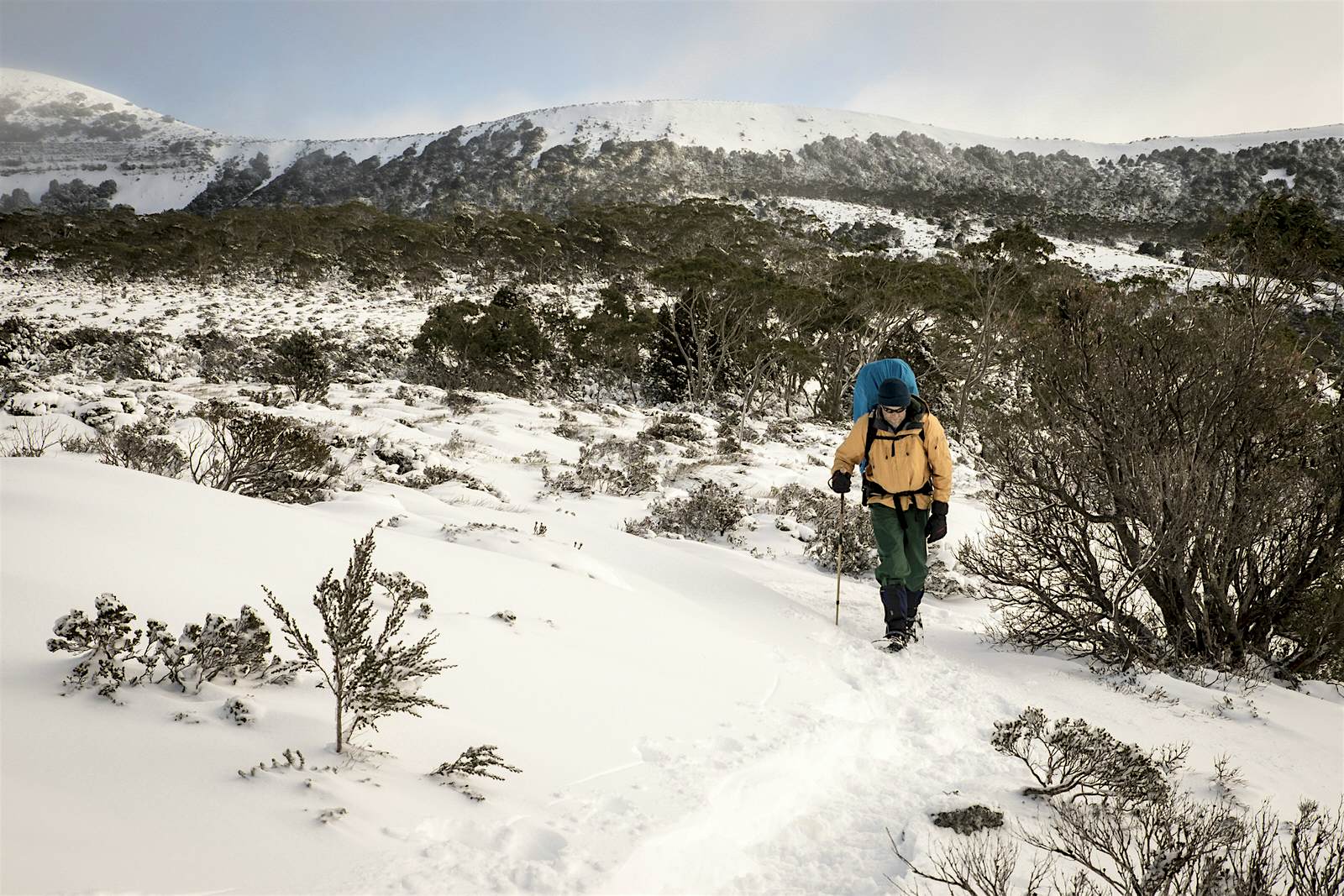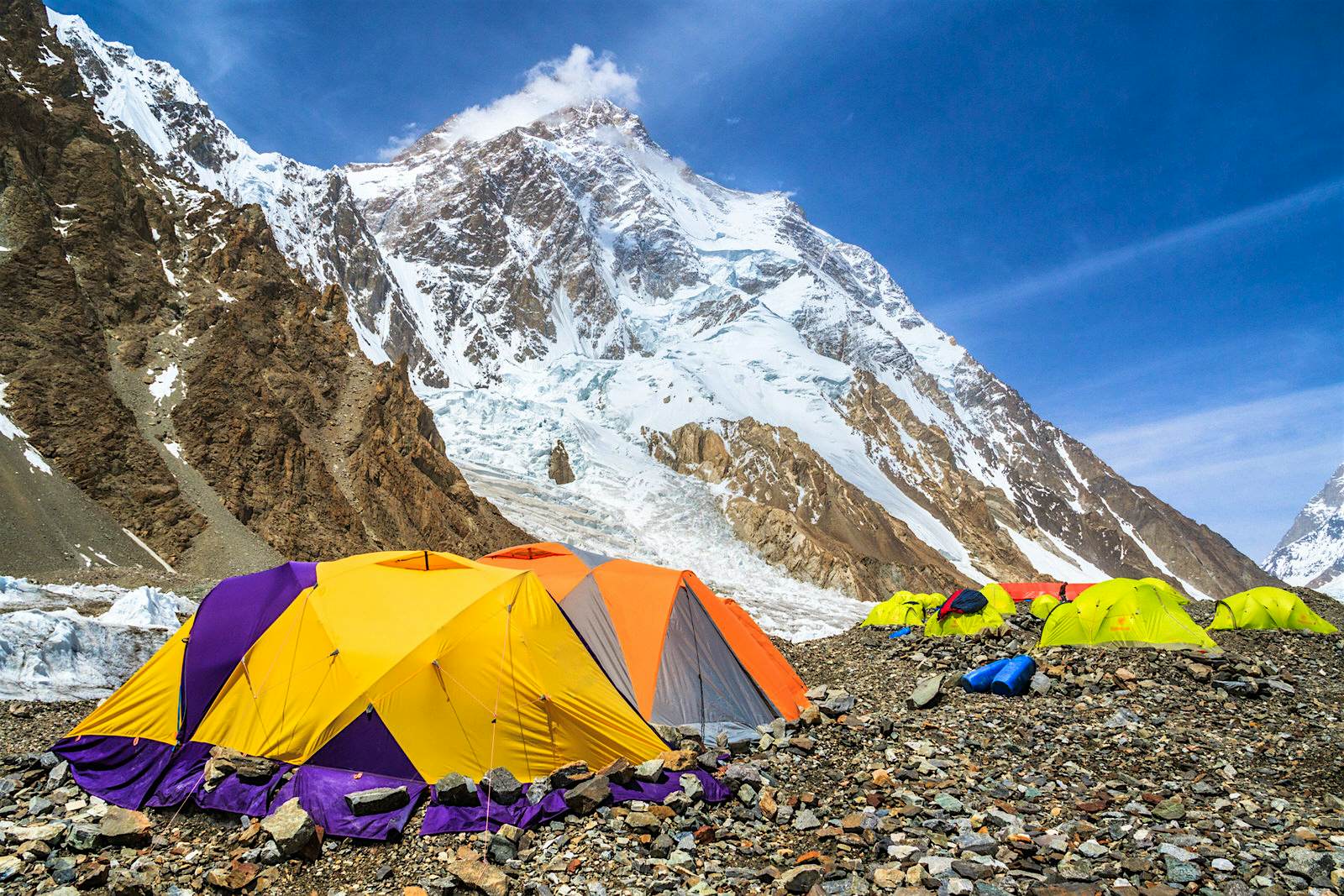Nepal’s battered mountaineering tourism’s autumn hopes are fading fast amid a rise in Covid-19 cases
Industry insiders say the fate of the upcoming climbing season rests on what approach the government takes to welcome tourists.
Nepal’s battered mountaineering tourism’s autumn hopes are fading fast amid rise in Covid-19 cases
The pandemic has wiped out jobs in Nepal’s mountaineering industry.
On February 20, when Pasang Tendi Sherpa landed in Nepal, he had just wrapped up a two-month-long climbing expedition on Mount Aconcagua in Argentina. The next mountain on his list was Everest.
Tendi, a certified guide of the International Federation of Mountain Guides Associations, works as a mountain guide for TAG Nepal, a Kathmandu-based outdoor outfitter. Internationally certified mountain guides like Tendi are in high demand during Nepal’s spring and autumn climbing seasons, and most of them spend months in the mountains, away from their families.
For Tendi, this year was not going to be any different. Then came Covid-19.
“I have been out of work since returning from Argentina,” said Tendi.
The spring climbing season, which begins in March, this year coincided with the beginning of lockdown. On March 20, the government banned all passengers, including Nepalis, from entering the country from the European Union territories, including the United Kingdom, West Asia, Gulf countries and countries like Iran, Turkey, Malaysia, South Korea and Japan. Four days later, on March 24, the government imposed a complete lockdown.
The lockdown forced dozens of companies to cancel their expeditions booked months ago. The cancellation of mountaineering expeditions left around 20,000 tours, trekking and mountain guides out of job, according to industry insiders.
But expedition companies were hopeful for autumn, which begins in September and lasts until November. The country’s peak tourism season, which attracts a third of the total 1.2 million tourists visiting Nepal, does not generally draw tourists for Mount Everest, but hordes of adventure seekers come to trek. Many small peaks see heavy traffic during the autumn season.
In addition to treks to the Everest Base Camp, thousands of tourists travel across the country to various remote valleys and peaks, giving a much-needed boost to the local economies while employing nearly half a million Nepalis, mostly as trekking and mountaineering guides.
On July 21, the government decided to lift the lockdown allowing hotels and restaurants, trekking and mountaineering companies to prepare for the autumn season. They were reopened on July 30. The scheduled domestic and international flights, however, were planned to open by August 17. Hope was growing strong.
But since lifting the lockdown, there has been a steady rise in coronavirus cases.
On Monday, the government said that international and domestic flights will remain suspended until August 31.
Industry stakeholders–from high-altitude workers to guides and porters to lodging and fooding companies–are now deeply worried about the future.
When Tendi returned from Argentina, his plan was to rest for two weeks before getting ready for Everest. For the spiring’s Everest expedition, his employer TAG Nepal had 32 climbers from all over the world.
“To support them, we had a team of 200 people, which included mountain guides, high-altitude sherpas, cooks, kitchen boys, porters” Tendi told the Post. “From our company’s Everest expedition alone, the lockdown meant 200 people losing their source of livelihood.”
At big expedition agencies, the number of people who have lost their jobs is much bigger.
Seven Summit Treks, one of the leading expedition agencies in Nepal, had 250 climbers for the spring climbing season.
“We had 100 clients alone for Everest. The rest were for Kanchenjunga, Makalu, Dhaulagiri and Lhotse—all more than 8,000-metre peaks, including the 6,812-metre high Ama Dablam,” said Mingma Sherpa, chairman of Seven Summit Treks. “Had the expeditions gone ahead, we would have been able to employ 1,000 people.”
Every year, young people are eager to have a crack at a high-paying job in the Everest region.
Thirty-eight-year-old Janga Bahadur Tamang was 14 when he fled from his home in Okhaldhunga and arrived in Lukla hoping to find a job in trekking expeditions.
During his first two years in Lukla, Janga worked as a porter.
“When I was 16, I found work as a kitchen helper for a mountaineering expedition, and I have been doing this job since,” said Janga, who now works as a second cook for an expedition agency. He has the experience of working with expeditions on Everest, Mera Peak, Ama Lapcha and Makalu. When the autumn climbing season ends, Janga works as a trekking guide.
“The money I make from these two seasons is usually enough to sustain my family for a year and a half,” said Janga.
This March, he was supposed to join an Everest expedition as a cook, a job that would have employed him until the end of May.
“When the climbing season got cancelled, I was a bit worried but I had some savings to fall back on, and I thought when the autumn season resumes, I can get back to earning money and things will be better,” said Janga.
But with less than a month to begin the season, Janga says his hope of getting back to work is sinking. Like Janga, hundreds of people in the Everest region are hopeful that after a painful spring, autumn would salvage their losses.
“Lukla, the gateway to Everest, where almost everyone is dependent on tourism income, the mood is still deeply worrying,” said Janga. “My savings will probably support me for another few months only.”
Santa Bir Lama, president of Nepal Mountaineering Association, said every year, the association issues 1,200 to 1,500 climbing permits.
While the government itself issues permits to mountaineering expeditions for Himalayan peaks more than 7,000 metres high, the association has been allowed to manage 27 small peaks known as ‘trekking peaks’ which range in height from 5,587 to 6,654 metres.
“Each permit can have anywhere between 1 and 15 climbers, and each climber employs three to five people,” said Santa. “Many who depend on mountaineering have been hit hard by the cancellation of the spring climbing season, and if the autumn climbing season gets cancelled, many people will be in financial ruin.”
The mountaineering community is eagerly waiting for the government to develop health safety protocols, including quarantine measures if the autumn climbing is to happen.
Meera Acharya, director of the Department of Tourism, said they are drafting health safety protocols for the mountaineering activities.
“We are expected to unveil the safety protocols soon,” she said, without elaborating further.
Besides health safety protocols for mountaineering activities, other guidelines for foreign tourists are still awaited.
“Everything now depends on what kind of quarantine rules the government comes up with. If it declares that travellers will have to stay in quarantine for a week or more after arriving in Nepal, there’s no way we can attract climbers,” said Mingma.
While the Tourism Ministry plans to allow tourists to visit Nepal with less hassle, the Ministry of Foreign Affairs is not interested in providing on-arrival visas.
“The Health Ministry is also for regulating tourist movements,” said an official at the Tourism Ministry who spoke on condition of anonymity because of the sensitivity of the matter.
The guidelines for tourists, which are yet to be finalised, have set a few requirements for tourists—negative polymerase chain reaction (PCR) test results no older than 72 hours on arrival; another PCR test in Nepal from government-designated hospitals and clinics; 14 days of quarantine in hotels; and Covid-19 travel insurance.
“All these documents, except for the PCR test in Nepal, should be submitted while boarding a plane,” said the official. “As per the preliminary discussions, tourists can spend seven days in quarantine in Kathmandu hotels, and another seven days in hotels outside Kathmandu.”
Travel agencies are required to take all the responsibilities of the tourists, starting from picking them up at the airport.
Many tourism stakeholders have suggested that the government set up dedicated Covid-19 testing at the airport and provide results in a few hours so that incoming travellers won’t face the hassle of staying in quarantine for days.
Mingma said that many climbers are still interested to come to Nepal for the autumn climbing season.
“We still have around 200 climbing enthusiasts who want to climb Manaslu and Lhotse during the autumn season,” said Mingma. “Even though that number is just 20 percent of what we normally have for the season, during such a difficult time, even if we could run expeditions for these climbers, it will provide the much-needed income for many who haven’t had any work for months.”
Eagerly waiting for tourists, Janga and his family are counting on the authorities in Kathmandu to decide.
“Spring is gone, and if the autumn doesn’t happen, I’ll be in no position to pay my rent,” he said. “I have made up my mind to build a temporary shed on a plot of land not far from where I live and move my family there.”












